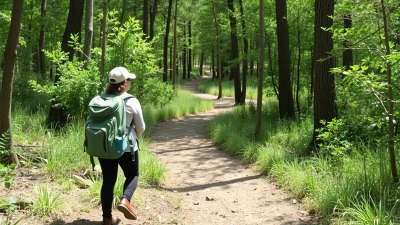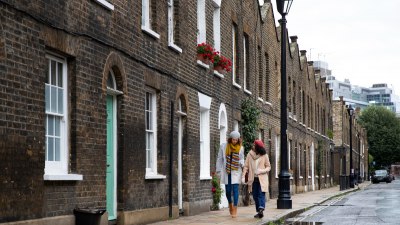You Visited, but the Place Remained Unseen
Explore the concept of unseen beauty in familiar places and how we perceive our surroundings.

Image created with Flux Schnell
In our fast-paced lives, we often find ourselves in places that hold vast potential for beauty and experience, yet we leave them unseen. This discrepancy is rooted in our perception, our distractions, and the very nature of how we travel through life. It is common to visit iconic landmarks or serene landscapes while remaining unaware of the subtleties that truly define these places. To understand how we might better engage with our surroundings, it's essential to delve into the idea that a place can be visited but never truly seen.
The Essence of a Place
A place is more than just its physical characteristics; it carries the weight of history, emotions, and stories that invite us to engage more deeply. For instance, consider a small town that is often passed by en route to a more famous destination. This town may have quaint shops, local art, and unique citizens contributing to a vibrant culture. However, if our focus is solely on getting to our next stop, we may miss the opportunity to discover the charm that lies beneath the surface. Truly seeing a place requires us to slow down and absorb what is around us.
The Power of Presence
To truly see a place, we must practice the art of presence. Being present means diverting our minds from distractions and immersing ourselves in our surroundings. When we take the time to observe, listen, and feel, we discover layers of interest that are often overlooked. For example, sitting on a park bench and watching the world unfold can reveal interactions and experiences we would otherwise miss if we rushed through. This act of slowing down teaches us patience and appreciation for the little things that contribute to a place's uniqueness.
Perception and Experience
Our experiences shape the way we perceive places. When visiting a new location, our feelings, past experiences, and even our current mood create a filter through which we interpret what we see. If we approach a place with preconceived notions or distractions from personal troubles, we may cloud our vision, leading to a superficial experience. Recognizing this can give us the power to change our perspective, ensuring we are open to the gifts a place has to offer.
The Role of Perspective
Perspective is crucial in understanding the beauty of a location. Different individuals can visit the same site, yet their experiences can be entirely different based on their own backgrounds and perspectives. Someone visiting a historic battlefield may experience a sense of reverence, while another person may see it merely as a tourist site. Embracing diverse perspectives can enhance our understanding of a place, fostering a deeper connection to both its significance and who we are as individuals.
Intangible Connections
In addition to visual stimuli, places hold intangible connections that can influence our experiences. The energy of a location, the sound of rustling leaves, or the scent of rain on pavement can evoke powerful emotions and memories. It's these sensory feelings that can truly help us see a place, allowing us to come away with lasting impressions. Taking time to engage our senses can help form these vital connections, turning a passing visit into a meaningful experience.
The Importance of Stories
Every place has its narrative, a blend of histories, anecdotes, and memories woven together over time. By learning the stories behind a location, we can deepen our connection to it. For example, visiting a historical site or museum can provide context about what once occurred there, prompting us to reflect on the broader implications of our shared human experience. Seek out stories—ask locals, look for plaques, or read books—to transform our visits into quests for knowledge.
Embracing the Journey
Sometimes, the journey toward a destination can be just as captivating as the destination itself. Embracing the journey encourages us to appreciate the evolution of a location, noticing changes along the way. Whether it's a road trip winding through small towns or a leisurely hike up a mountain, every moment spent immersed in our surroundings adds to the overall experience. Allowing ourselves to enjoy the journey enables us to form deeper connections with the land and its stories.
Art of Reflection
We often return home from travels, grateful for the experiences we’ve had but may not take the time to reflect on them. Reflection is a vital practice that solidifies our memories and insights gained during our visit. By journaling or discussing our experiences, we can continue to explore the nuances of what we’ve seen and felt. Consider what struck us about a particular place—was it the people, the food, or a specific moment that we witnessed? Reflection helps cement our experiences into long-term memories.
Practicing Gratitude
Gratitude is a transformative practice that can enhance our perception of places. By cultivating a grateful mindset, we open ourselves up to recognizing and savoring beauty, even in the mundane. Each location carries its own virtues and limitations; acknowledging what we appreciate about a place fosters a deeper understanding and compassion for it and its inhabitants. Practicing gratitude allows us to see richness where we may have otherwise overlooked.
Using Technology Mindfully
In today’s world, technology is ubiquitous, offering both advantages and pitfalls. Smart devices can provide instant information about a location, but they can also be distracting. To truly see a place, we should use technology mindfully. Instead of permitting our devices to hijack our attention, we can leverage them to enhance our experience—like using a map to navigate without becoming entangled in constant notifications. Balancing technology and presence ensures that we engage fully with the world around us.
Building Connections with Locals
Engaging with local residents can enrich our understanding of a place unlike any guidebook can. Locals possess intimate knowledge, stories, and insights beyond what we can glean as outsiders. When we take the time to ask questions, listen, and share experiences, we foster connections that elevate our journey. This human interaction brings a place to life, providing textures that can turn our visit into a remarkable experience.
A Call to Action
Ultimately, the essence of truly seeing a place lies in our approach. By embracing presence, practicing gratitude, engaging our senses, and connecting with the narratives and people around us, we enhance our experiences. The next time you find yourself in a new location, remember that it is not merely about clocking the ‘destination’ on your travel itinerary. Instead, challenge yourself to see beyond the obvious and explore with a curious heart. Doing so fosters a lasting connection with the landscape, history, and people that will make every visit unforgettable.











